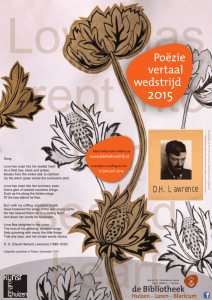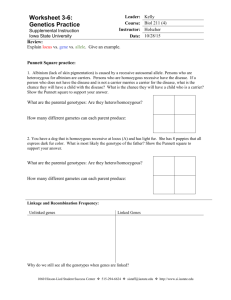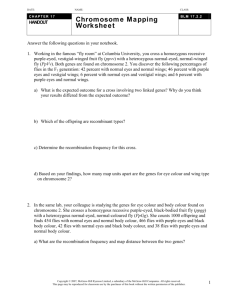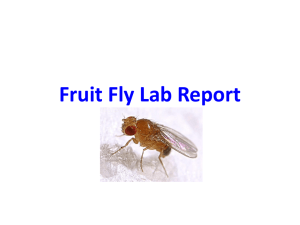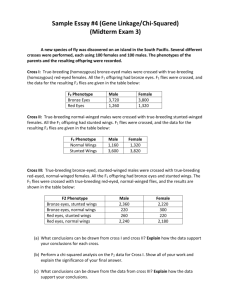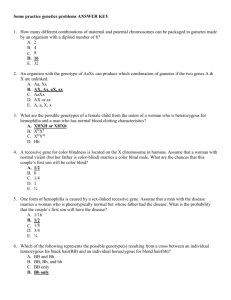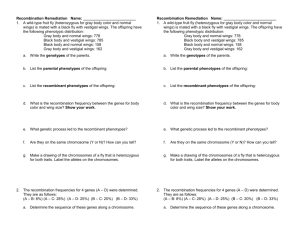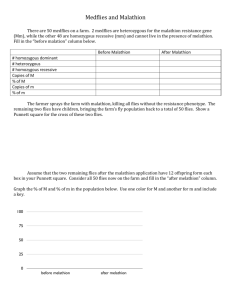The Dihybrid Cross
advertisement
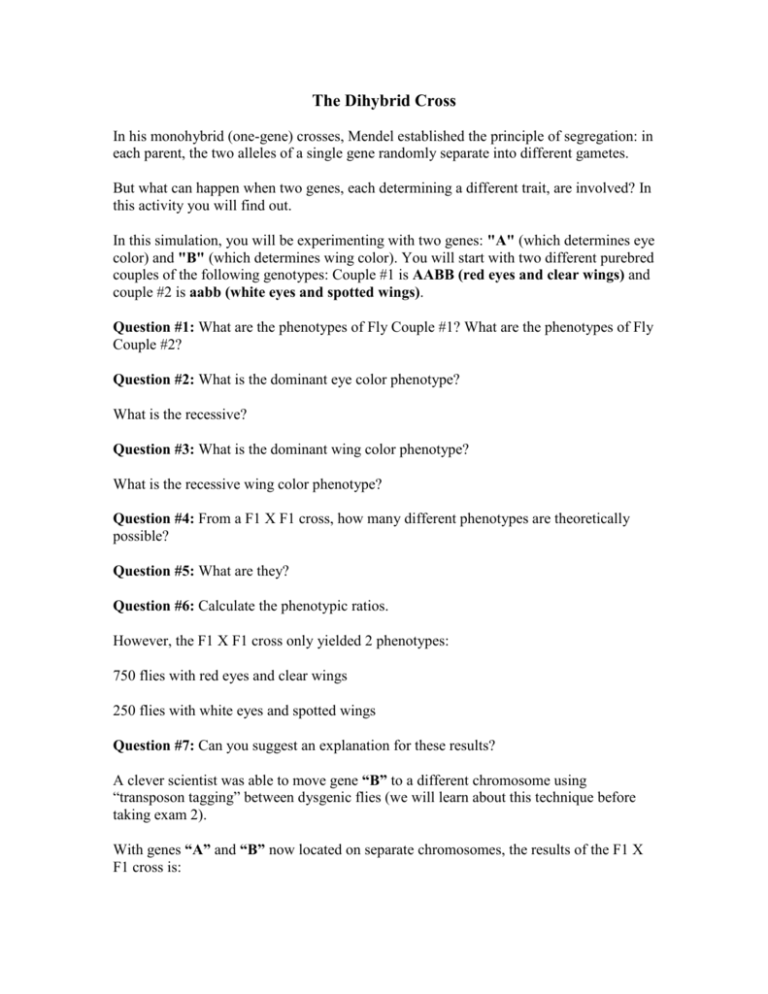
The Dihybrid Cross In his monohybrid (one-gene) crosses, Mendel established the principle of segregation: in each parent, the two alleles of a single gene randomly separate into different gametes. But what can happen when two genes, each determining a different trait, are involved? In this activity you will find out. In this simulation, you will be experimenting with two genes: "A" (which determines eye color) and "B" (which determines wing color). You will start with two different purebred couples of the following genotypes: Couple #1 is AABB (red eyes and clear wings) and couple #2 is aabb (white eyes and spotted wings). Question #1: What are the phenotypes of Fly Couple #1? What are the phenotypes of Fly Couple #2? Question #2: What is the dominant eye color phenotype? What is the recessive? Question #3: What is the dominant wing color phenotype? What is the recessive wing color phenotype? Question #4: From a F1 X F1 cross, how many different phenotypes are theoretically possible? Question #5: What are they? Question #6: Calculate the phenotypic ratios. However, the F1 X F1 cross only yielded 2 phenotypes: 750 flies with red eyes and clear wings 250 flies with white eyes and spotted wings Question #7: Can you suggest an explanation for these results? A clever scientist was able to move gene “B” to a different chromosome using “transposon tagging” between dysgenic flies (we will learn about this technique before taking exam 2). With genes “A” and “B” now located on separate chromosomes, the results of the F1 X F1 cross is: 870 flies with red eyes and clear wings 320 flies with red eyes and spotted wings 310 flies with white eyes and clear wings 106 flies with white eyes and spotted wings Question #8: In both F1 X F1 crosses, each parent has the same genotype. What is the genotype? Question #9: What is the difference in the results between the first and the second F1 X F1 crosses? Question #10: Explain why this difference exists using Mendel's Law of Independent Assortment as the basis for your discussion. Question #11: Use a Punnett square to demonstrate how it could be used to approximate the ratio obtained from the second F1 X F1 cross. Question #12: What can you conclude about the phenotypic ratios of F1 X F1 dihybrid crosses if the two genes are completely linked on the same chromosome? If the two genes are completely unlinked or are on different chromosomes? Let's focus on the condition where the two genes are located on different chromosomes. Consider the individual (from the F2 generation) with red eyes and clear wings. Question #13: What are all the possible genotypes for individuals with this phenotype? Question #14: Suggest a plan to distinguish among these different genotypes. Question #15: Using your plan from question #14, determine each subject's genotype. You need to show examples to receive credit for this question!!! Question #16: A deaf man with a recessive deafness allele on chromosome 17 marries a deaf woman who also has a recessive deafness allele, but on chromosome 3. The probability that their children will be deaf is closest to: a. 100%. b. 50%. c. 25%. d. 0%. Please show how you obtained your answer.
